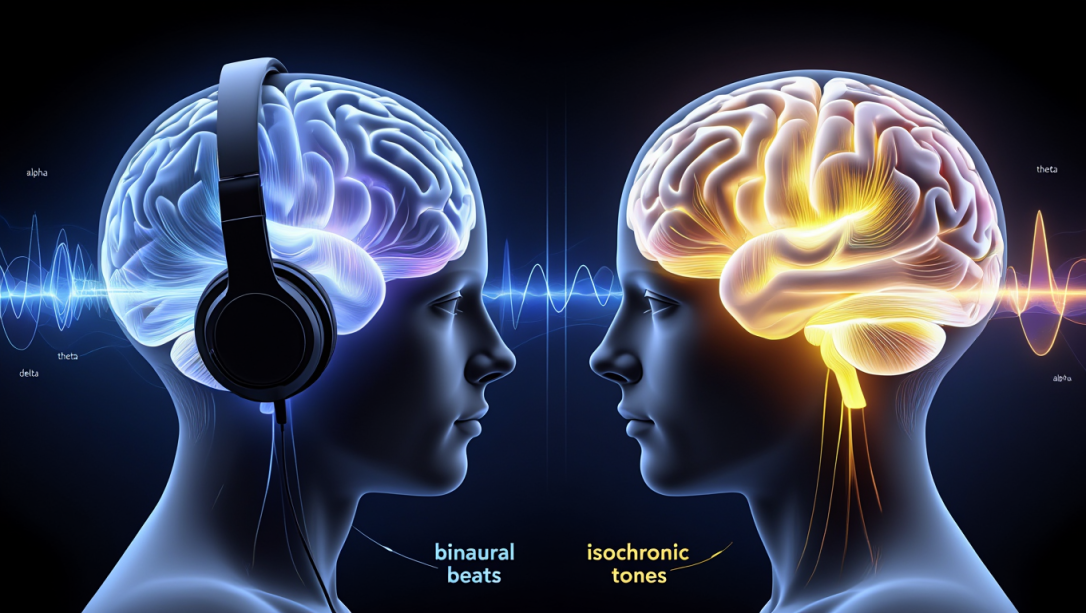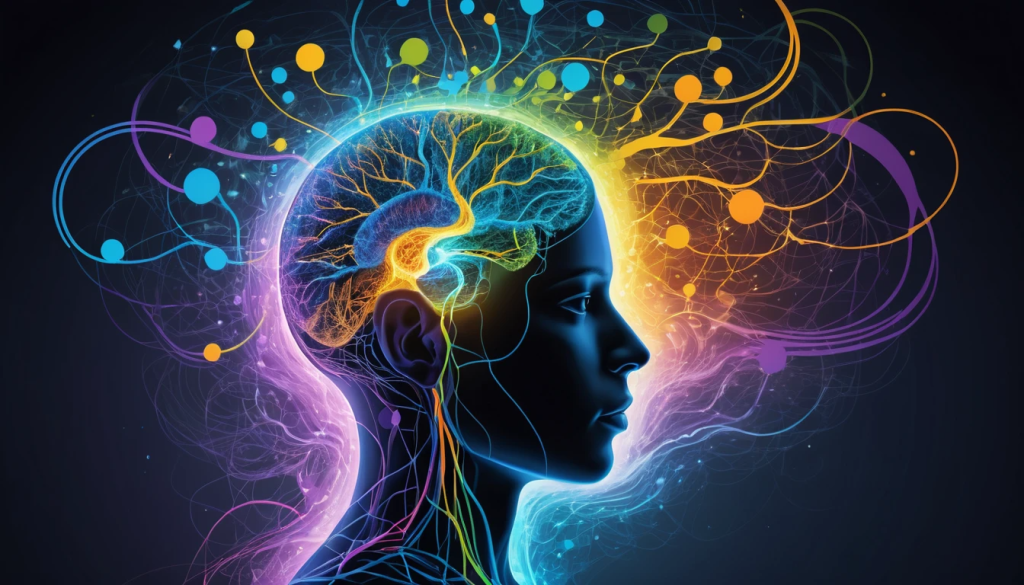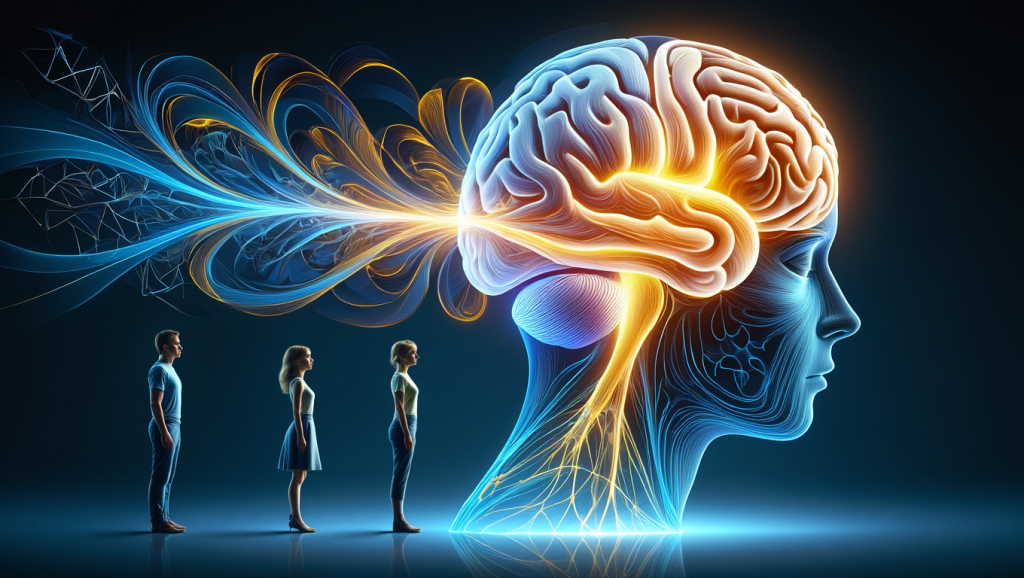In the world of brain entrainment and audio-based neural stimulation, two technologies stand out: isochronic tones and binaural beats. Both promise to guide your brain into specific states of consciousness – from deep relaxation to heightened focus – but they work in fundamentally different ways. If you’re looking to optimize your mental performance or enhance your meditation practice, understanding the differences between these methods can help you choose the right tool for your needs.
The Science Behind Brain Entrainment
Before diving into the comparison, let’s briefly explore what brain entrainment actually is.
Brain entrainment (sometimes called brainwave entrainment) refers to the brain’s natural tendency to synchronize with external rhythmic stimuli – particularly sound or light. When exposed to consistent rhythmic patterns, your neural activity begins to match or “entrain” to that frequency. This phenomenon, known as the “frequency following response,” allows us to intentionally guide the brain into specific frequency bands:
- Delta waves (0.5-4 Hz): Deep sleep, healing
- Theta waves (4-8 Hz): Deep relaxation, meditation, creativity
- Alpha waves (8-13 Hz): Relaxed alertness, calmness
- Beta waves (13-30 Hz): Active thinking, focus, alertness
- Gamma waves (30+ Hz): Higher cognitive processing, peak awareness
Now, let’s examine how our two contenders work to influence these brainwaves.
Binaural Beats: The Traditional Approach
How Binaural Beats Work
Binaural beats were discovered in 1839 by Heinrich Wilhelm Dove and represent one of the earliest documented brain entrainment methods. They work through an interesting auditory illusion:
- A slightly different frequency tone is played in each ear (e.g., 200 Hz in the left ear and 210 Hz in the right)
- The brain perceives a third “phantom” beat equal to the difference between the two tones (in this case, 10 Hz)
- Neural activity begins to synchronize with this perceived beat
Advantages of Binaural Beats
- Well-researched: With decades of scientific studies, binaural beats have substantial research backing their effectiveness
- Subtlety: The beats themselves are often barely perceptible, making them easy to layer under music or nature sounds
- Proven track record: Many users report positive experiences with well-designed binaural programs
Limitations of Binaural Beats
- Headphones required: Since each ear must receive a different tone, headphones are absolutely necessary
- Less effective in noisy environments: Background noise can disrupt the subtle effect
- Not suitable for hearing impairments: Those with hearing loss in one ear won’t experience the binaural effect
- Weaker entrainment signal: The “phantom beat” is created inside the brain, resulting in a relatively weak stimulus
Isochronic Tones: The Modern Alternative
How Isochronic Tones Work
Isochronic tones are a more recent development in brain entrainment technology. Rather than creating a perceived beat through two different frequencies, isochronic tones use a single tone that’s turned on and off at regular intervals:
- A single tone rapidly pulses between full volume and silence
- These distinct, evenly-spaced pulses create a strong, clear rhythmic pattern
- The brain responds to this more pronounced stimulus, synchronizing neural activity to match the frequency
Advantages of Isochronic Tones
- No headphones necessary: Since both ears hear the same sound, speakers work fine (though headphones can enhance the experience)
- Stronger entrainment effect: The distinct on-off pattern creates a more potent stimulus for the brain
- Works with mono hearing: People with hearing in only one ear can benefit fully
- Effective in varied environments: The pronounced pulses can cut through background noise more effectively
- Faster results: Many users report quicker entrainment with isochronic tones compared to binaural beats
Limitations of Isochronic Tones
- More noticeable: The pulsing nature is more obvious and can be distracting for some people
- Less research: While growing in popularity, isochronic tones have fewer published studies than binaural beats
- Not ideal for sleep: The distinct pulses may be too stimulating for pre-sleep listening
Which Brain Entrainment Method Works Best?
The effectiveness of both methods depends on your specific needs, preferences, and the quality of the audio program. However, several factors suggest that isochronic tones may have an edge for most users:
Research Findings
Recent studies indicate that isochronic tones produce stronger measurable changes in brainwave activity than binaural beats. A 2013 study published in the journal Clinical Neurophysiology found that isochronic stimulation produced more significant EEG changes than binaural beats at the same target frequency.
Practical Considerations
From a practical standpoint, isochronic tones offer greater flexibility. The ability to use them without headphones and in varied environments makes them more accessible for regular use. This advantage shouldn’t be underestimated—consistency is key to seeing benefits from any brain entrainment practice.
User Experience
While personal experiences vary, many practitioners report faster and more noticeable effects with isochronic tones. The distinct pulses provide clearer guidance for the brain, particularly for newcomers to entrainment practices.
When to Choose Each Method
Despite the advantages of isochronic tones, binaural beats remain valuable in specific scenarios:
Choose Isochronic Tones When:
- You prefer not to use headphones
- You want faster, more noticeable results
- You’re using entrainment for focus or energy
- You have hearing limitations in one ear
- You’re in an environment with some background noise
Choose Binaural Beats When:
- You want a subtler, less noticeable effect
- You’re specifically using entrainment for sleep or deep relaxation
- You prefer gentler transitions between states
- You’re already comfortable using headphones for extended periods
- You’re in a quiet environment
The Best of Both Worlds: Combined Approaches
Many modern brain entrainment programs now incorporate both technologies, leveraging the strengths of each. These combined tracks often use isochronic tones for the primary entrainment while adding binaural elements for additional depth and richness.
At PeterMican.com, our premium brain entrainment sessions utilize this hybrid approach to maximize effectiveness while maintaining a pleasant listening experience.
Best Practices for Brain Entrainment
Regardless of which method you choose, follow these guidelines to maximize your results:
- Start with short sessions (15-20 minutes) and gradually increase duration
- Be consistent with your practice – daily sessions yield better results than occasional use
- Choose appropriate frequencies for your goals (theta for relaxation, alpha for calm focus, etc.)
- Listen in a comfortable position where you won’t be disturbed
- Give it time – entrainment effects often strengthen with regular practice
- Pay attention to quality – not all entrainment recordings are created equal
Conclusion: The Isochronic Advantage
While both technologies have merit, isochronic tones generally offer a more potent, flexible option for most brain entrainment purposes. Their stronger stimulus, practicality, and accessibility make them an excellent choice for both beginners and experienced practitioners.
That said, the “best” method ultimately depends on your personal response – some people simply respond better to one type than the other. Many of our customers at PeterMican.com find value in experimenting with both technologies to discover what works best for their unique neurophysiology.
Ready to experience the benefits of advanced brain entrainment? Explore our premium isochronic and hybrid sessions in our audio catalog and take the first step toward optimizing your mental state.
Have questions about brain entrainment or self-hypnosis? Leave a comment below or contact us directly. We’re always happy to help you on your journey toward enhanced mental performance.







